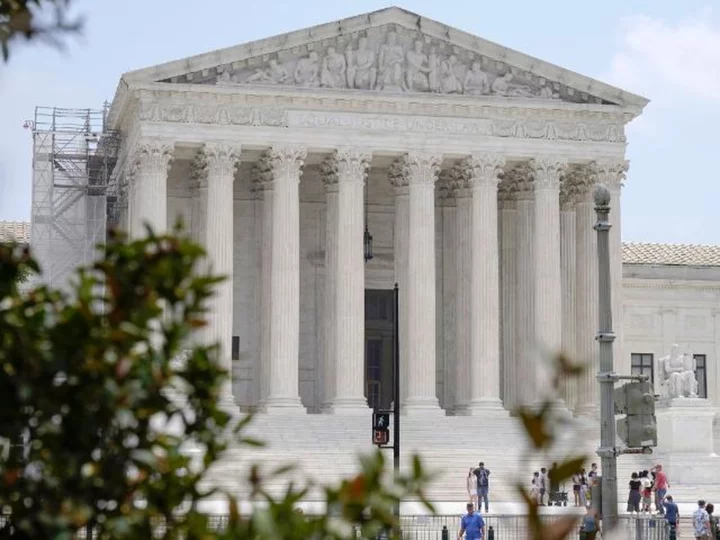James VI and I is sometimes overshadowed in historical memory by the royal women who preceded him. As the only child of Mary, Queen of Scots, he became King James VI of Scotland when she was forced to abdicate in 1567. Then in 1603, when the childless Elizabeth I died, he succeeded to the English throne and became James I of England. These two renowned queens may garner more attention these days, but James was just as interesting a ruler. Here are 10 facts about James VI and I, the first monarch to rule both Scotland and England.
1. James VI and I was just 13 months old when he became King of Scotland.
James was born in Edinburgh Castle on June 19, 1566, to Mary, Queen of Scots, and her second husband, Henry Stuart, Lord Darnley. Darnley was murdered eight months later, likely by Mary’s soon-to-be third husband, James Hepburn, the Earl of Bothwell. The enraged Scottish nobility rebelled and imprisoned Mary soon after their marriage; on July 24, 1567, they forced her to abdicate. The crown was passed to 13-month-old James—who Mary never saw again in the 20 years of captivity she endured before her execution in 1587.
There were (and still are) conspiracy theories surrounding the infant king. One rumor is that he was actually the illegitimate son of David Rizzio, Mary’s private secretary. Another is that James died soon after birth and was replaced by an imposter. Historians don’t give much credit to either theory.
2. Scotland was ruled by regents until 1579—but James VI and I didn’t really take control until 1583.
While the young king was being tutored in the ways of statecraft, Scotland was ruled by a succession of four regents: the Earls of Moray, Lennox, Mar, and Morton. James’s minority technically ended in 1579, when at 13 years old he made his ceremonial entry as king. However, due to his young age, his advisors were essentially in charge. In 1582, a group of disgruntled nobles kidnapped the teenaged king in a power grab now known as the Ruthven Raid. When 17-year-old James escaped in 1583, he seized control of Scotland, finally becoming king in more than just title.
3. James VI and I spearheaded the Scottish witch trials.
Witchcraft had been criminalized in Scotland since 1563, but it wasn’t until James VI’s influence that it became a nationwide panic. The king believed witches had attempted to kill both him and his new bride, Anne of Denmark, by conjuring bad weather. The pair were married by proxy in August 1589 and shortly afterwards the Danish princess set sail for Scotland. A violent storm forced the fleet to seek shelter in Norway and James himself crossed the stormy North Atlantic Sea to fetch his bride.
Agnes Sampson confessed—under torture—that she was part of a group of witches who cast a hex to plague the royal couple’s journey. The events of the trial were published in a pamphlet, titled News from Scotland (1591), as part of James’s attack on witchcraft. He also wrote his own book, Daemonologie (1597), which explained and vilified black magic.
James’s push to prosecute so-called witches was highly effective: around 2500 ‘witches’ were executed during Scotland’s witch trials, which, as reported by National Geographic, was “five times the average European execution rate per capita.” (At the time, roughly 1 million people lived in the country.)
4. He was an author as well as a king.
Despite being kept busy with royal duties, James found time to put quill pen to paper. In addition to his treatise on witchcraft, the author-king also wrote poetry, His Majesties Poeticall Exercises at Vacant Houres (1591); a pamphlet about his hatred of smoking, A Counterblaste to Tobacco (1604); and political philosophy, including The True Law of Free Monarchies (1598) and Basilikon Doron (1599). The former explained his belief in the divine right of kings, while the latter was a kingship manual for his eldest son, Henry. When 18-year-old Henry died of typhoid fever in 1612, the book was passed to James’s second son, who later became King Charles I.
5. After becoming King of England in 1603, James VI and I tried to unite Scotland and England.
When James inherited the English throne, he promised to visit Scotland every three years. But he returned only once, for just three months in 1617. Although James gaining control of England—and by extension Wales (which was an annex of England) and Ireland (which was a client state)—meant the Scottish and English crowns had been united, the countries remained separate entities that were governed by different parliaments.
James tried to fully unite Scotland and England, declaring in a 1604 speech to parliament, that God had “made us all in one island, compassed with one sea, and of itself by nature so indivisible.” In his mind, the countries being separate made him “a polygamist, and husband to two wives.” He soon took to calling himself “King of Great Brittaine”—a title that held no legal authority. Neither the Scots nor the English wanted to unite and James’s proposal was rejected.
The official union of Scotland and England as the United Kingdom of Great Britain didn’t happen until 1707. However, Britain’s national flag—the Union Jack—can trace its origins back to James’s desire for the union.
6. He sponsored the world’s best-selling book—the King James Bible.
To this day, the Christian Bible remains the best-selling book in the world, and the most popular version of the religious tome is the King James Bible, which took its name from its sponsor, James VI and I. James was ruling at a religiously tricky time; the sovereign’s power in relation to the church had been called into question by Henry VIII’s rejection of the Pope’s authority. With Christianity becoming increasingly splintered, James was eager to solidify his power as a Protestant king and authorized a new English edition of the Bible to help his cause.
The King James Bible was published in 1611. Though it didn’t stabilize the religiopolitical situation, it has since proven to be one of the most influential books the world has ever seen.
7. James was the target of the Gunpowder Plot (and other conspiracies).
“Remember, remember, the 5th of November, / Gunpowder, treason and plot.” So goes the popular nursery rhyme about the 1605 Gunpowder Plot that sought to kill the king and blow up parliament. The Catholic plot was led by Robert Catesby, but it was Guy Fawkes who was found beneath parliament with explosives after one of the conspirators sent an anonymous warning letter. As a result, effigies of Fawkes are burned on bonfires throughout the UK on November 5 each year in commemoration.
While the Gunpowder Plot is the most well-known conspiracy against James, it wasn’t the only one. The Gowrie Conspiracy in 1600 was an assassination attempt that angered James so greatly he banned the perpetrator’s family name—Ruthven (the same family who carried out the Ruthven Raid)—and seized their lands.
James also faced the connected Main Plot and Bye Plot in 1603, the first year of his English reign. The former plot intended to replace him on the throne with the Catholic Arabella Stuart, while the latter aimed to force him, via kidnap, to retract anti-Catholic laws. Lord Cobham and Sir Walter Raleigh were both imprisoned in the Tower of London for their supposed involvement.
8. Jamestown, the first successful English colony in North America, takes its name from James VI and I.
Although James wasn’t the first English monarch to try to colonize North America, he was the first to see success in the venture. Elizabeth I assigned the task to Sir Walter Raleigh but Roanoke, founded in 1585, failed and the colonists’ disappearing act spawned an enduring mystery.
It was under James’s reign that the first permanent English colony was established: Jamestown, named after the king, was founded by the Virginia Company in 1607. Life was hard for the colonists—cannibalism even occurred during the winter of 1609—but things started to look up thanks to tobacco seeds brought over by John Rolfe. Although James hated tobacco, it was a profitable commodity and he granted the Virginia Company a monopoly.
9. James VI and I probably had three male lovers throughout his life.
Along with his wife and a female mistress—thought to have been the Scottish courtier Anne Murray, and about whom James wrote two poems (unpublished during his reign)——it’s believed that James likely also had three male lovers, although the intimate details of these relationships remain unclear.
The first was Esmé Stewart, a 37-year-old French nobleman who arrived at the Scottish court in 1579 and was James’s first cousin once removed. He quickly became the 13-year-old king’s favorite, being made the Duke of Lennox and appointed to the Privy Council. It was reported that “in the open sight of the people oftentimes [James] will clasp [Stewart] about the neck with his arms and kiss him.” Stewart was sent back to France when James was kept prisoner during the Ruthven Raid.
James later set his sights on the courtier Robert Carr, Earl of Somerset. In the Renaissance version of a rom-com meet-cute, in 1607, Carr fell from his horse and broke his leg while jousting in front of James, who then nursed him back to health. Their relationship began to fall apart a few years later when Carr married Frances Howard. In a 1615 letter, James complained that Carr was “creeping back and withdrawing yourself from lying in my chamber, notwithstanding my many hundred times earnest soliciting you to the contrary.”
As James’s relationship with Carr was cooling off, his relationship with George Villiers, a commoner whom he elevated to Duke of Buckingham, was heating up. In a 1623 letter, James described Villiers as “my sweet child and wife,” and himself as “your dear dad and husband.” He also publicly professed his love, declaring to the Privy Council: “I love the Earl of Buckingham more than anyone else.” As with his previous favorites, gossip spread about the probability of the pair having sex. French poet Théophile de Viau even wrote, “And that learned English king, / Wasn’t Buckingham his f[*]ck?” (“Et ce sçavant Roy d’Angleterre, / Foutoit-il pas le Boukinquan.”).
10. James VI and I died of dysentery.
James was unwell in his final years. Along with the pain he suffered from gout, arthritis, and kidney stones, he also lost all of his teeth. At the beginning of 1625, he had a stroke; on March 27 of that year—at the age of 58—he died of dysentery. He was buried in Westminster Abbey, in a tomb beneath Henry VII’s grave monument.
This article was originally published on www.mentalfloss.com as 10 Facts About King James VI and I.









